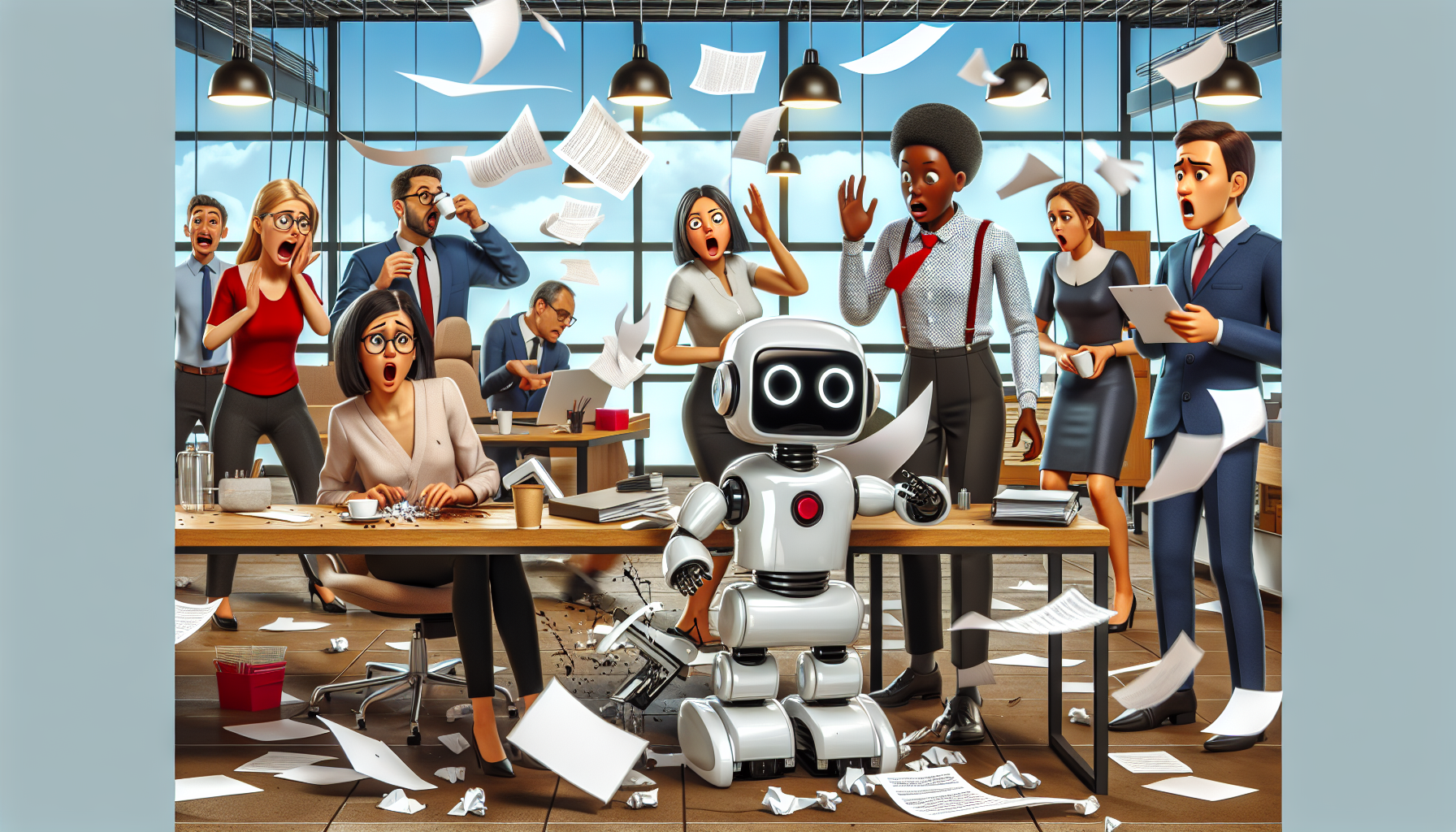Understanding Robot Malfunctions
Defining Robot Malfunctions
Robot malfunctions can occur due to various factors, such as software bugs, hardware failure, or unexpected environmental changes. When these machines designed to perform specific tasks or assist human workers experience issues, the impact can ripple throughout the workplace.
Types of Robot Malfunctions
The types of malfunctions can range widely. Some common examples include:
Software Glitches
These can manifest as operational errors, where the robot fails to perform its intended task correctly. For instance, a programming error might cause a robotic arm to misalign during assembly, leading to costly production delays.
Hardware Failures
Components such as sensors, motors, or actuators can fail, rendering the robot non-functional. A breakdown in these systems can lead to a halt in workflows that rely on automation.
Environmental Influences
Robots are often programmed to function within specific environmental parameters. Changes in temperature, humidity, or even unexpected obstructions can lead to malfunctions. For example, if a dust storm suddenly envelops a manufacturing facility, robots might misinterpret locations and fail to complete their tasks.
Impact on Workplace Efficiency
Immediate Halt in Operations
One of the most immediate effects of a robot malfunction is the potential halt in operations. Imagine an assembly line that relies heavily on robotic systems for efficiency. When one of these robots malfunctions, it can lead to a bottleneck, affecting production schedules and deliveries.
Ripple Effect on Human Workers
The malfunction of robots doesn’t just stall machines; it also impacts human workers. Workers might have to step in to pick up the slack, which can lead to increased workloads and stress. This sudden shift can decrease overall morale and efficiency, leading to a less productive environment.
Increased Workload
When robots fail, human workers are often called upon to perform tasks that robots were initially designed to complete. For example, if a robotic pick-and-place system stops functioning, warehouse workers may need to manually handle the products, which can lead to fatigue and errors as they adjust to the increased workload.
Job Security Concerns
Frequent malfunctions in robotic systems might spark concerns about job security among human employees. If management perceives that robots aren’t working as intended, they may reconsider the extent of automation, leading to anxiety among staff about their roles in the company.
Financial Implications
Repair and Maintenance Costs
When robots malfunction, businesses face immediate costs related to repairs and maintenance. Depending on the complexity of the robot, repairs can be expensive and time-consuming. Companies may need to invest in specialized technicians or replacement parts, which can strain budgets.
Downtime Costs
Each moment a robot is offline due to a malfunction represents lost productivity. Calculating the cost of downtime can be crucial for businesses that rely heavily on automation. For example, in manufacturing, a single hour of downtime could cost thousands of dollars depending on the scale of operations.
Long-Term Equipment Investment
Frequent malfunctions might lead to questions about the original investment in the robotic system. If a robot consistently malfunctions, companies might contemplate spending more on higher-quality or newer technology, which can represent a significant financial decision.
Safety Concerns
Increased Risk of Workplace Accidents
Malfunctioning robots can create dangerous situations for human workers. A robot that fails to sensor a human worker in its path can lead to injuries or accidents. Safety protocol training becomes vital in environments heavily populated by robots to ensure that workers understand how to react in these scenarios.
Emergency Protocols and Response
When a robot malfunctions, proper emergency protocols must be in place. This requires training for all employees to adequately respond to technologic failures. For instance, knowing how to quickly shut down a robot can prevent escalation into a more significant safety incident.
Psychological Effects on Employees
Stress and Anxiety
The unpredictability associated with robot malfunctions can create a stressful work environment. Employees may feel on edge, never knowing when a robot failure might require their immediate attention or compromise their safety.
Trust Issues with Automation
Ongoing issues with robotic systems can lead employees to question the reliability of the technology. If workers perceive that the robots cannot be trusted to perform their functions correctly, this can create a hesitancy to embrace future automation efforts.
Cultural Shifts Within the Workplace
Changing Perceptions of Technology
Frequent malfunctions can shift the collective attitude towards automation within a company. Employees may develop a skepticism regarding the benefits of robotic assistance, focusing more on the negatives rather than viewing robots as facilitators of productivity.
teamwork Reassessments
With robots sometimes failing, the dynamics of teamwork can shift. Employees may need to communicate and collaborate more, fostering a different type of team spirit as they tackle issues that arise due to the limitations of technology.
Exploring Solutions
Regular Maintenance and Upgrades
To minimize the potential for malfunctions, companies can implement regular maintenance schedules and necessary upgrades to ensure that robotic systems perform reliably. This not only extends the life of the machines but can also significantly reduce unexpected breakdowns.
Comprehensive Training Programs
Training employees to understand not only the operational aspects of robots but also how to respond to malfunctions can create a more resilient workplace. Programs that teach troubleshooting techniques can empower workers and reduce anxiety associated with robot failures.
Embracing Human-Robot Collaboration
Reinforcing Human Oversight
Rather than viewing robots as complete replacements for human workers, it’s crucial to embrace a collaborative approach. Human oversight of robot functions can create a balance between efficiency and safety, ensuring that malfunctions can be addressed proactively.
Leveraging Data for Improvement
Companies can gather data on robot performance and malfunctions to understand better the root causes of failures. By focusing on continuous improvement and feedback loops, organizations can increase the reliability of their robotic systems over time.
Through these insights, we can better navigate the complexities introduced by robotic malfunctions, creating a more reliable, efficient, and human-centered workplace.
